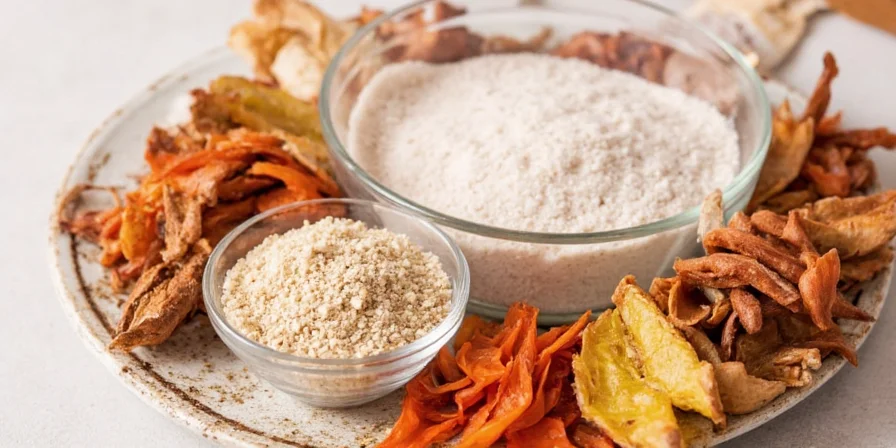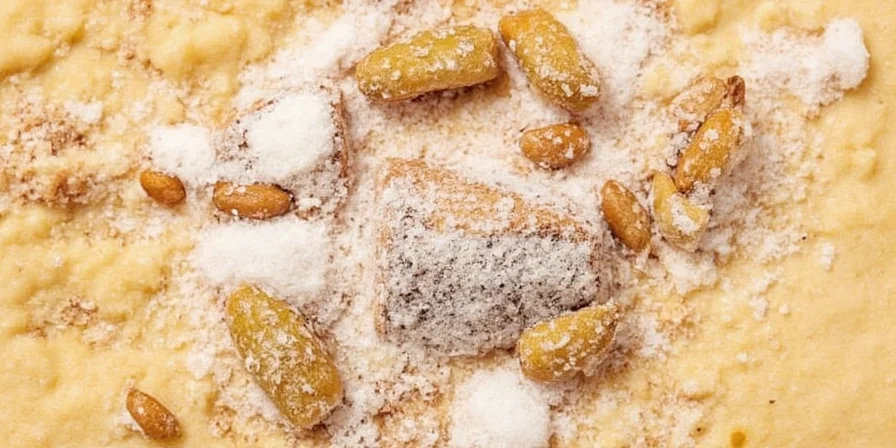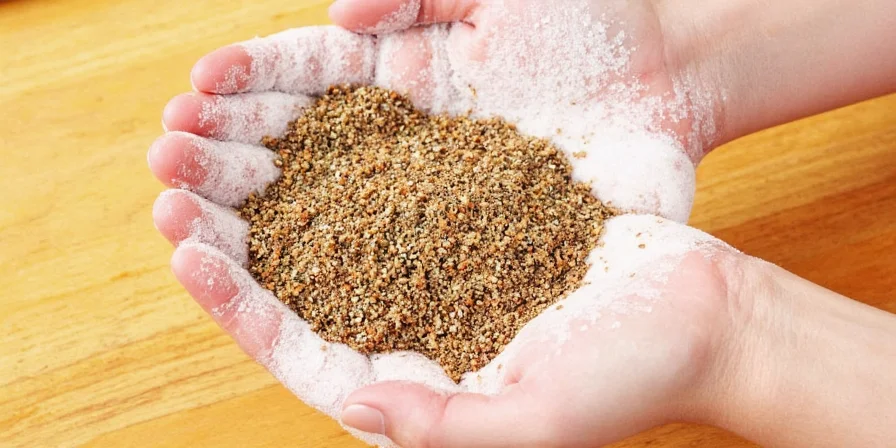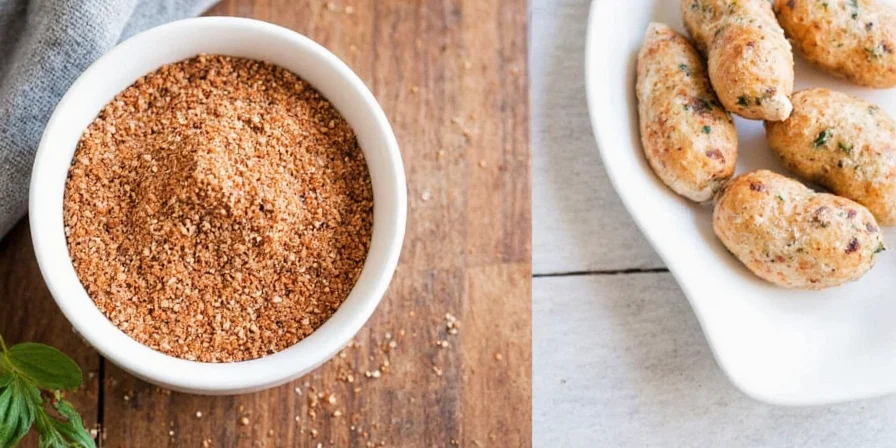5 Savory Substitutes for Seasoned Salt (That’ll Save Your Dish & Your Sanity)
Introduction
If you've ever stood in front of your spice rack, staring into the abyss while holding an empty shaker of seasoned salt, you know the panic. That moment when your recipe calls for seasoned salt — and it’s just… gone.
Fear not! There's life after seasoned salt, and it’s full of flavor. Whether you're a home cook who just ran out or a culinary pro looking to expand your seasoning knowledge, this guide is for you.
In this article, we’ll walk through five solid substitutes for seasoned salt that will keep your dishes tasting great — no last-minute grocery runs required.
What Exactly Is Seasoned Salt Anyway?
Before we dive into alternatives, let’s break down what seasoned salt actually is. It’s not just plain table salt — it’s a savory blend of:
- Salt (usually iodized or sea salt)
- Paprika
- Garlic powder
- Onion powder
- Some combination of celery seed, black pepper, turmeric, or other mild spices
It’s like a shortcut seasoning superhero — adding depth and flavor without needing a whole squad of individual spices.

Why Substitute Seasoned Salt?
- You’re Out of It: Classic kitchen emergency scenario. The recipe says “seasoned salt,” but your jar is empty.
- Dietary Restrictions: Some seasoned salt blends contain additives, anti-caking agents, or high sodium levels that don’t fit certain diets.
- Customization: You want more control over flavors — maybe more heat, less garlic, or no paprika.
- Experimentation: You’re a flavor adventurer looking to upgrade your seasoning game beyond the basics.
The Ultimate List: Top 5 Substitutes for Seasoned Salt
1. Homemade Seasoned Salt (DIY Version)
Why buy when you can make your own? Mix together the following:
| Ingredient | Quantity |
|---|---|
| Kosher Salt | 3 parts |
| Garlic Powder | 1 part |
| Onion Powder | 1 part |
| Paprika | 1 part |
| Black Pepper | ½ part |
| Celery Seed (optional) | ½ part |
Mix well and store in an airtight container. This gives you total control over sodium and flavor balance.

2. Lawry’s Seasoned Salt
Yes, this one seems obvious — but sometimes the original is still the best. If you're substituting by name rather than from scratch, Lawry’s is a widely available, classic choice.
- Flavor Profile: Balanced, slightly garlicky, with a touch of sweetness from paprika.
- Best For: Roasted vegetables, grilled meats, soups, stews.
3. Cajun Seasoning
This spicy cousin of seasoned salt brings heat, color, and boldness to the table.
- Key Ingredients: Paprika, garlic powder, onion powder, cayenne pepper, oregano, thyme.
- Flavor Boost: Adds smoky, spicy depth perfect for grilled shrimp, fries, or cornbread.

4. Adobo Seasoning
If you’re craving Latin-inspired flair, adobo seasoning is your go-to substitute.
- Main Components: Garlic powder, onion powder, oregano, cumin, turmeric, salt.
- Perfect With: Chicken, rice dishes, tacos, and beans.
- Note: Adobo has less paprika than seasoned salt, so adjust if you’re missing that red hue.
5. Old Bay Seasoning
This Maryland-born blend is iconic for seafood boils, but it works wonders elsewhere too.
- Flavor Notes: Peppery, herbal, with hints of mustard and clove.
- Great On: Popcorn, roasted nuts, crab cakes, potato salad.
When to Use Which Substitute?
| Substitute | Best For | Flavor Notes |
|---|---|---|
| Homemade Seasoned Salt | All-purpose use | Balanced, customizable |
| Lawry’s Seasoned Salt | Classic dishes | Mild, familiar |
| Cajun Seasoning | Spicy meals | Smoky, hot, earthy |
| Adobo Seasoning | Latin-inspired dishes | Herby, warm, rich |
| Old Bay Seasoning | Seafood, snacks | Peppery, aromatic, complex |
Pro Tips for Using Seasoned Salt Substitutes Like a Pro
- Taste as You Go: Every brand varies in salt content and spice intensity. Start with a small amount and adjust.
- Think Beyond Meat: These seasonings work wonders on roasted veggies, popcorn, scrambled eggs, and even avocado toast!
- Make a Signature Blend: Once you find your favorite mix, label it and make it your new staple.
- Reduce Sodium Smartly: If you’re watching salt intake, reduce the salt portion in homemade blends and boost herbs and aromatics.
- Pair with Citrus: A squeeze of lemon or lime brightens up any seasoned dish and balances out richness.
FAQs About Seasoned Salt Substitutes
Can I use regular salt instead of seasoned salt?
Technically yes, but you’ll lose the depth of flavor. Try adding garlic powder, onion powder, or a dash of paprika to compensate.
Is seasoned salt the same as garlic salt?
Nope! Garlic salt is mostly salt with a bit of garlic. Seasoned salt has a broader range of spices, including garlic but also onion, paprika, and more.
How long do homemade spice blends last?
Stored properly in an airtight container away from light and moisture, most homemade spice blends stay fresh for 6–12 months.
Final Thoughts: Salt, But Make It Flavorful
Seasoned salt is convenient, but not essential. With these smart substitutes and a little creativity, you can elevate your cooking without ever buying another bottle again.
So next time you reach for that dusty jar of seasoned salt, remember: you’ve got options. And now you know exactly which ones are worth trying.
Conclusion
Ran out of seasoned salt? No problem. With these five flavorful alternatives, you’ll never be stuck in a bland situation again. From DIY blends to ready-made options like Cajun seasoning, adobo, and Old Bay, there’s a substitute that fits every taste and dish.
Whether you're cooking for comfort or entertaining with flair, spicing things up doesn’t have to mean stress. Now go ahead — season boldly, live deliciously.











 浙公网安备
33010002000092号
浙公网安备
33010002000092号 浙B2-20120091-4
浙B2-20120091-4